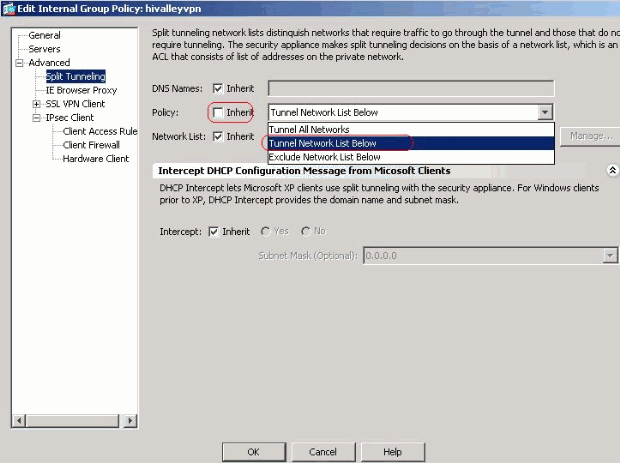God eater download pc. (split tun´&l-ing) (n.) The process of allowing a remote VPN user to access a public network, most commonly the Internet, at the same time that the user is allowed to access resources on the VPN. This method of network access enables the user to access remote devices, such as a networked printer, at the same time as accessing the public network. Split tunneling can work to alleviate this problem since it allows users to send only that traffic which is destined for the corporate network across the tunnel. All other traffic such as instant messaging, email, or casual browsing is sent out to the Internet via the local LAN of the VPN Client. Configure Split Tunneling on the ASA.
Split tunneling is used when you want to allow remote VPN users to connect directly to Internet resources while using a corporate VPN instead of routing that traffic through the VPN. Obviously, traffic to the internal corporate LAN still goes through the encrypted VPN tunnel, but other traffic goes directly through the public Internet. There are valid reasons for choosing either to use a split tunnel or not, mainly related to security.
Examples of Split Tunneling
Companion Video
I've created the following video to show you how to configure a split tunnel on a Cisco ASA security appliance.


Start by creating an access control list to permit a traffic-flow from the internal network:
access-list Split_Tunnel_List standard permit 192.168.101.0 255.255.255.0
Next, enter attributes configuration mode for the desired VPN group policy (in this example, the group-policy name is Account Reps NA):
group-policy 'GroupPolicy_Account Reps NA' attributes
Now, specify the split tunnel mode. You can choose from the following three options:
- excludespecified (exclude only networks specified by split-tunnel-network-list)
- tunnelall (tunnel everything)
- tunnelspecified (tunnel only networks specified by split-tunnel-network-list)
split-tunnel-policy tunnelspecified
split-tunnel-network-list value Split_Tunnel_List
Watch the video for a complete demonstration of each of the commands.
For More Cisco ASA Configuration Information
Pick up a copy of my configuration guide The Accidental Administrator: Cisco ASA Security Appliance, available through Amazon and other resellers.
Please Leave a Comment
If you find this tutorial helpful or if you notice something that needs to be corrected, please leave a comment.
The truth is, vpn is great piece of technology and vpn is mine favourite topic in networking.Vpn is amazing tool that can help user to make secure connection to corporate network over an unsecured internet. By default any traffic sent through the VPN network goes through the VPN server in an encrypted manner.Sometimes you need certain traffic should not go through your VPN , That’s why split tunnelling comes into picture.Split Tunneling does exactly the same what its name stands for – Split your Internet traffic.

Split tunneling is a vpn (virtual pirvate network) concept which allows a remote user to access different network domain such as Internet and a local LAN or WAN at the same time, while using the same internet connection.With split Tunneling VPN, you have control to route internet traffic through the VPN network or your local network.
By Default – A Remote VPN software client can route your 100% traffic through vpn sever.But, split-tunnelling feature allow user to select specific traffic to be pushed via a encrypted VPN tunnel , while remaining internet traffic is routed by local internet breakout (Local ISP) as it normally would be.So, this way you can isolate corporate and internet traffic at user-end machine.
Split tunneling come in play when network administrator want to allow remote VPN users to connect directly to Internet resources (browsing, Facebook , email) while using a corporate VPN instead of routing that traffic through the VPN.
Split tunnelling give you control over which traffic in your network get the VPN treatment and which don’t.Split tunnelling refers to the practice of routing only some traffic over the VPN, while let the other traffic directly access the Internet via local internet breakout. Usually, what is routed over the VPN will be traffic destined for internal resources, while web surfing, Facebook , Netflixemail, etc. will go directly to the Internet. The VPN client is configured to route interesting traffic through the tunnel, while using the default gateway of the physical address for everything else.
Split tunnelling allowing a remote VPN user to access a public network (Internet) while accessing corporate resources (server , application) from home or remote locations.With feature of split tunnelling, a vpn user can simultaneously access a public network while connected to a remote access vpn such Cisco any connect or Global protect vpn. In other words, it provides a multi-services access networking path.
Windows 10 Vpn Split Tunneling
Split tunnelling can categorized the network traffic based on how it is configured. A split tunnel configured to only tunnel traffic destined to a specific set of destinations is called a split-include tunnel. When configured to accept all traffic except traffic destined to a specific set of destinations, it is called a split-exclude tunnel.
Split tunnelling involves the configuration of an Access Control List (ACL) that will be associated with this feature. The traffic for the subnets or hosts that is defined on this ACL will be encrypted over the tunnel from the client-end, and the routes for these subnets are installed on the PC routing table.
Split tunnelling is a concept of vpn network that allow administrator to define the traffic of the network (subnet and host) that must be encrypted and routed via tunnel to vpn gateway.

Split tunnelling configuration is involves the configuration of an Access Control List (ACL).
Solved: Wireless Split Tunneling - Cisco Community
The desire vpn network subnet define in the ACL will be encrypted over the tunnel from the end-user, and the routes for these subnets are installed on the PC routing table.
Cisco Anyconnect Split Tunneling On Pc
Related
